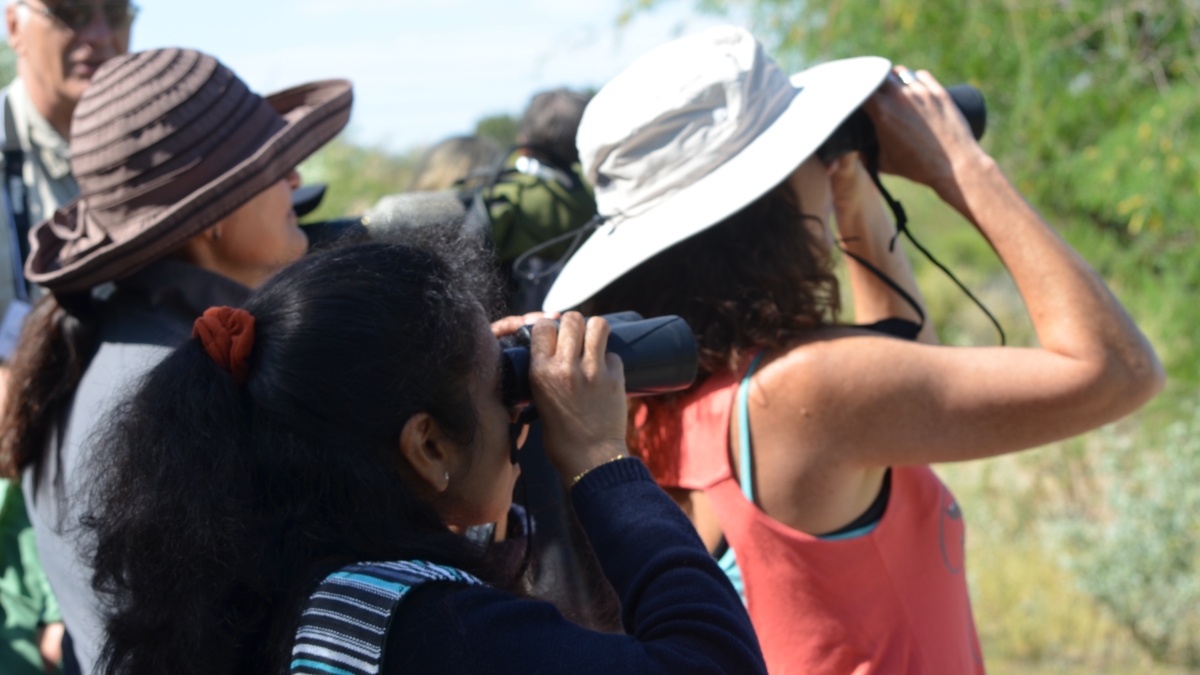Hiking in a riparian wonderland: ASU faculty, students share love of nature

With wildlife teeming around them, dozens of adults and children explored a diverse Arizona ecosystem with Arizona State University’s School of Life Sciences faculty during the school’s annual SOLS Takes a Hike.
Held April 5 at the Riparian Preserve at Water Ranch in Gilbert, guests spotted birds and sampled wild berries, peered through microscopes at tiny organisms and handled live animals, all with life sciences experts to guide them. Everyone had a chance to learn about the native plants and animals that thrive there.
School of Life Sciences faculty members Dave Pearson and Pierre Deviche led 45 minute hikes around several ponds to explore the Riparian’s diverse bird population. As they discussed many of the birds that were spotted, they also set up tri-pod telescopes so hikers could get a closer look. The pair even pointed out a variety of bird songs that were heard – even if the birds were not actually seen.
Some children, including grade-schooler Rachel Archie, joined the bird watching with gusto.
“They taught us that some birds don’t fly and that there are some birds people haven’t seen in a long time,” Archie said. According to Archie, she even helped spot birds that others missed. “My favorite part was when I found the quail all by myself.”
Like other faculty members, Pearson has contributed to this event for many years. “Seeing the excitement and being able to talk to people about my interest in nature is my favorite thing,” Pearson said. “I feel kind of like a missionary in some ways.”
Life sciences graduate students Elizabeth Cash and Ti Eriksson set up displays with both living and dead insects – ranging from entire ant habitats to a collection of beetles. Professors Jim Elser and Susanne Neuer collected water samples from the nearby ponds and placed them under microscopes so guests could study organisms that are typically invisible to the naked eye.
To Neuer, the best thing she can do at the event is to explain as much as she can to people who are interested. At the same time, Neuer said she learns new things herself.
“I explain things about the algae – opening people’s eyes to a world they normally don’t see,” Neuer said. “But I also like to learn about things like insects, since I don’t know much about them. And seeing the reptiles, being able to touch them, is great too. I learn something new every time I come here.”
Plenty of people also lined-up to hold a snake or pet the tortoise brought by Sandra Schenone, a vivarium supervisor with ASU’s Department of Animal Care and Technologies. School of Life Sciences faculty and graduate students host the community event each April to share their excitement about the life sciences with the public.

